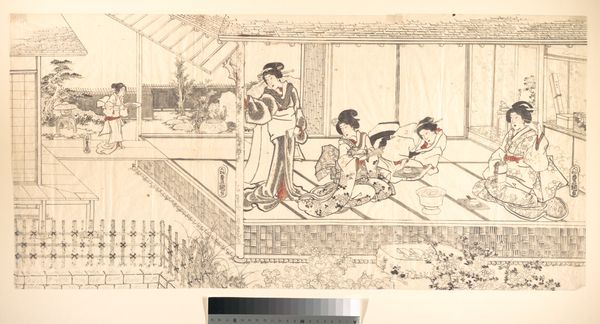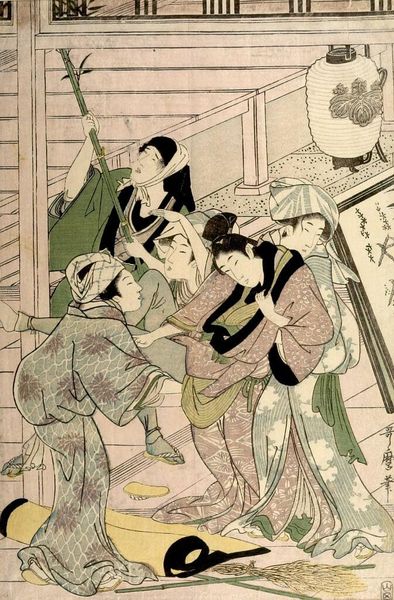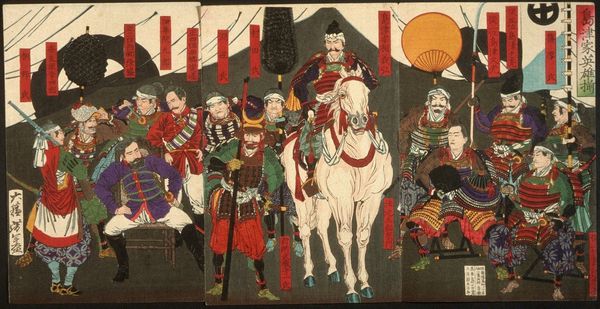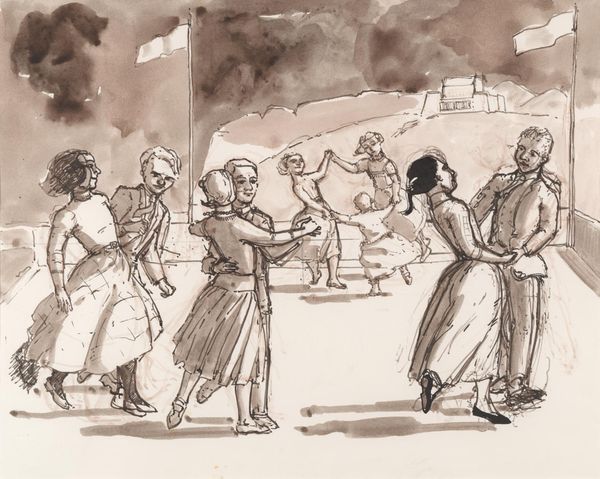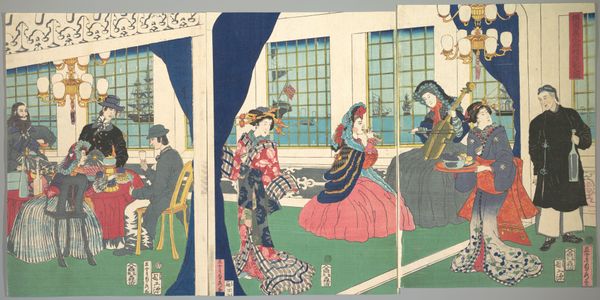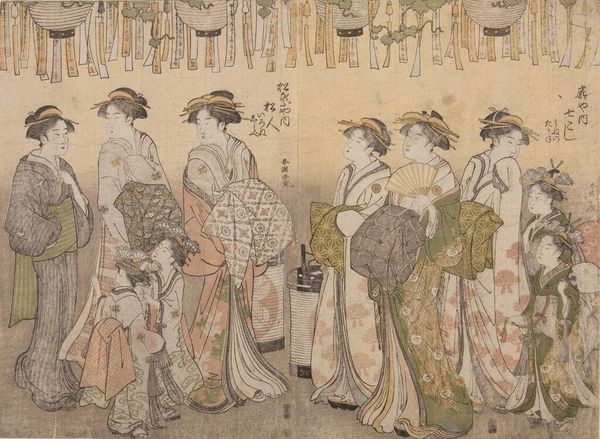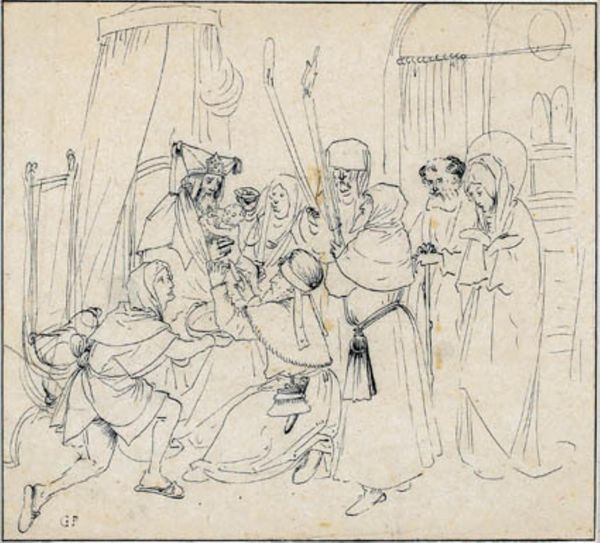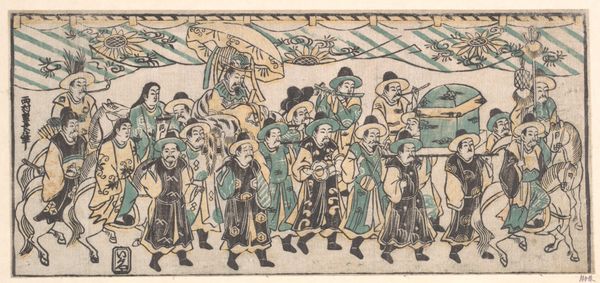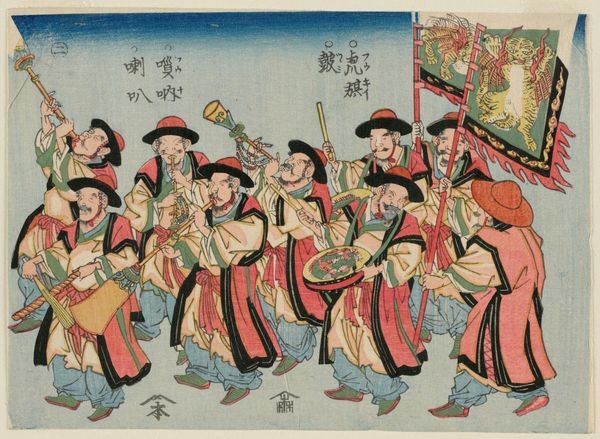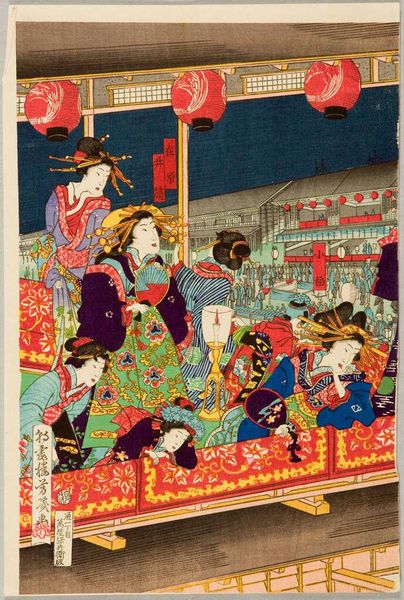
drawing, pen
#
portrait
#
drawing
#
caricature
#
figuration
#
historical fashion
#
romanticism
#
line
#
pen
#
cityscape
#
genre-painting
#
history-painting
Copyright: Public domain
Curator: Let’s turn our attention to “Train of the Düsseldorf Artists,” a pen drawing by Andreas Achenbach from 1837. Editor: Well, right off the bat, it's a fascinating parade of characters, all elongated features and exaggerated expressions. There's definitely a sense of playful critique here. Curator: Absolutely. Achenbach presents us with a snapshot of his artistic contemporaries, though through the lens of caricature. It offers an interesting insight into the social dynamics of the Düsseldorf art scene at that time, showcasing these artists in what appears to be a somewhat mocking, if affectionate, procession. Editor: The long noses and pointed chins, coupled with those stiff costumes! It’s interesting to note the symbolism—many hold specific objects. What could the pipes, the child’s toy horse, and that rather glum-looking dog signify? Curator: That’s the intriguing part, isn’t it? The details offer glimpses into each artist's perceived identity or artistic focus, playing on stereotypes or personal attributes, like visual puns. The fact that Achenbach uses pen and ink adds a certain lightness to the satire; the linearity lends itself well to caricature. Editor: It gives it a clean, almost clinical feel, as though pinning them like insects. There is also something inherently historical in it. It is not just people but representations of their time, captured and preserved with all of the nuances. Curator: Precisely, we get this sense of collective identity tied with this budding, influential movement happening in the art community within the city. What I love about it is that the piece captures both their individual aspirations and the overall trajectory of the Düsseldorf school during the period. Editor: So we have this group dynamic and a clear indication of each artist as part of this specific, critical movement. Seeing the image with all of its caricature touches becomes much more poignant. The objects and visual indicators act as a bridge to a fuller context and history. Curator: It is a window into the social fabric of that community. What might seem as harmless play reveals underlying themes. Editor: True. One could lose hours deciphering who is whom and to what they are alluding. What a fascinating, complicated reflection!
Comments
No comments
Be the first to comment and join the conversation on the ultimate creative platform.

